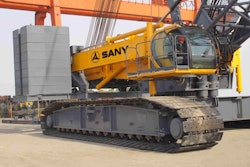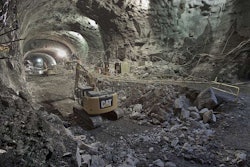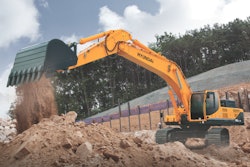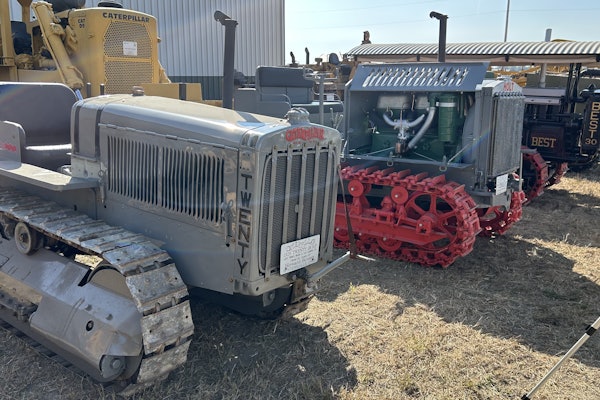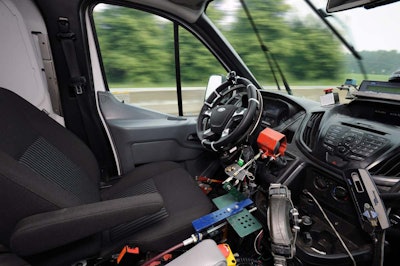 The hardware side of Ford’s robotic test driving system.
The hardware side of Ford’s robotic test driving system.We may be a way off from driverless cars on the highways, but Ford is already using the technology to test the toughness of its trucks.
The test drive is a big deal for automakers. Though the conceptual phase and physical design of automobiles are important, you could argue that it’s on the test track that the car is truly born because that’s where all of that design is proven to be good.
It should come to no surprise that when it comes to trucks, Ford takes durability seriously. And so, the automaker runs its trucks through a literal gauntlet of durability testing so torturous that the tests compress 10 years of daily driving into just a few hundred yards. Some of the surfaces driven over include broken concrete, cobblestones, metal grates, rough gravel, mud pits and oversized speed bumps.
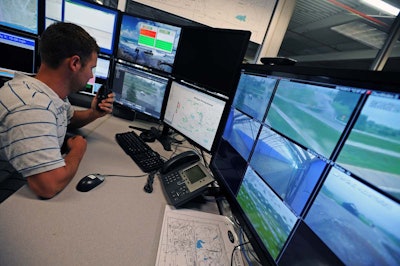 Using camera and GPS tracking Ford engineers can program a path and monitor up to eight robotically-driven test vehicles simultaneously. Credit: Ford
Using camera and GPS tracking Ford engineers can program a path and monitor up to eight robotically-driven test vehicles simultaneously. Credit: FordSuffice it to say this might be as rough on the human test driver as it is on the car, should you ask him or her to drive this gauntlet as much as is necessary to test a truck’s toughness. In fact the tests are so strenuous that test drivers were only allowed to drive the courses once a day.
So in order to test its cars when its drivers couldn’t, Ford worked with Autonomous Solutions to develop the industry’s first robotic test driving system.
“The challenge is completing testing to meet vehicle development time lines while keeping our drivers comfortable,” said Dave Payne, manager, vehicle development operations, in a prepared statement. “Robotic testing allows us to do both. We accelerate durability testing while simultaneously increasing the productivity of our other programs by redeploying drivers to those areas, such as noise level and vehicle dynamics testing.”
A robotic control module inside the trucks steers the vehicle and controls its acceleration and braking. Cameras and GPS tracking accurate to roughly one inch keep the test trucks on a programmed path. If the trucks leave that path, engineers can overide the robotic controls to stop the vehicle, correct its course or restart the test.
And should a person, animal or another vehicle find its way into the path, onboard sensors stop the car automatically.
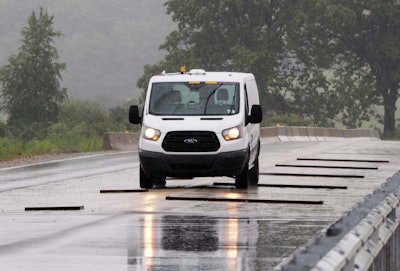 A Ford Transit van being robotically test driven.
A Ford Transit van being robotically test driven.With the use of the robotic test drivers, Ford has accelerated its testing now capable of an unlimited number of repeats on the course until Ford engineers are satisfied with the truck’s performance. Plus, Ford will begin creating even more rigorous test courses for the robotic driving system that should result in even more durable trucks.
The most recent vehicle to receive testing with the robotic system was the Ford Transit van. Be sure to watch the video of these robot drivers below.
[youtube ckjiFFpRn4Q nolink]




